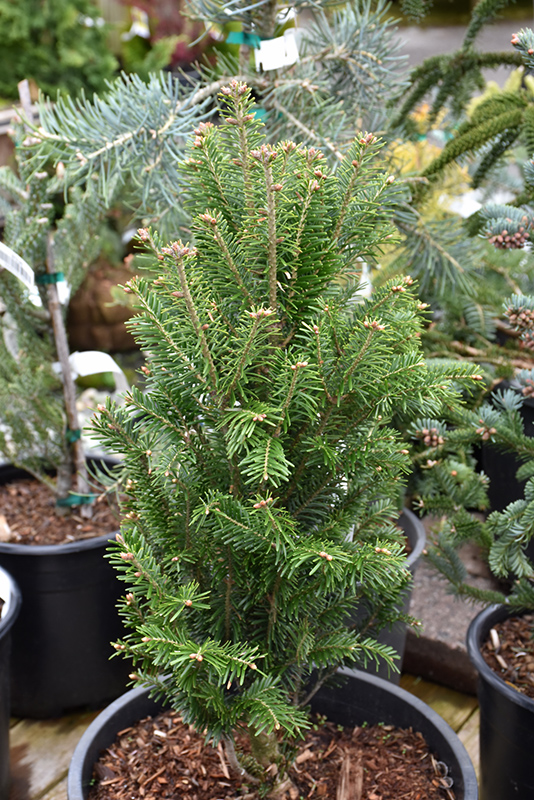Fastigiate Silver Fir Abies alba 'Fastigiata' Height: 10 feet Spread: 28 inches
Sunlight:
Hardiness Zone: 4 Other Names: European Silver Fir Description: This is one of the most narrow, columnar selections of silver fir, featuring short, dense needles and tightly upswept branches; makes a wonderful focal point in the landscape Ornamental Features Fastigiate Silver Fir is primarily valued in the landscape or garden for its rigidly columnar form. It has attractive dark green evergreen foliage. The glossy needles are highly ornamental and remain dark green throughout the winter. The smooth gray bark adds an interesting dimension to the landscape. Landscape Attributes Fastigiate Silver Fir is a dense evergreen tree with a strong central leader and a narrowly upright and columnar growth habit. Its relatively fine texture sets it apart from other landscape plants with less refined foliage. This is a relatively low maintenance tree, and usually looks its best without pruning, although it will tolerate pruning. It has no significant negative characteristics. Fastigiate Silver Fir is recommended for the following landscape applications; Planting & Growing Fastigiate Silver Fir will grow to be about 10 feet tall at maturity, with a spread of 28 inches. It has a low canopy with a typical clearance of 1 foot from the ground, and is suitable for planting under power lines. It grows at a slow rate, and under ideal conditions can be expected to live for 50 years or more. This tree does best in full sun to partial shade. It does best in average to evenly moist conditions, but will not tolerate standing water. It is not particular as to soil type or pH. It is somewhat tolerant of urban pollution, and will benefit from being planted in a relatively sheltered location. Consider applying a thick mulch around the root zone in both summer and winter to conserve soil moisture and protect it in exposed locations or colder microclimates. This is a selected variety of a species not originally from North America.![]()
![]()
![]()
![]()
![]()
![]()
![]()
![]()
![]()
![]()
![]()
![]()
![]()
![]()
Characteristics
Applications
Ornamental Features
This guide is an online resource representing many of the varieties that we carry over the course of the season, and is intended for informational purposes only. Inventory varies seasonally, so we cannot guarantee that every plant will be in stock at all times - please contact the store directly for current availability. It does not include our entire selection of plants, so be sure to visit our store to see varieties that may not be represented on this list.


